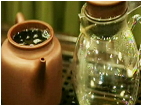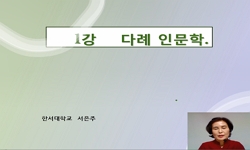본 논문은 문헌 연구로 구례 지역과 화엄사의 차 문화에 대해 세 가지 측면에서 고찰하였다. 첫째, 차 문화는 선종 유입과 도당구법승, 왕의 친소 관계 등과 관련되어있다. 따라서 신라에 차...
http://chineseinput.net/에서 pinyin(병음)방식으로 중국어를 변환할 수 있습니다.
변환된 중국어를 복사하여 사용하시면 됩니다.
- 中文 을 입력하시려면 zhongwen을 입력하시고 space를누르시면됩니다.
- 北京 을 입력하시려면 beijing을 입력하시고 space를 누르시면 됩니다.
https://www.riss.kr/link?id=A107247720
- 저자
- 발행기관
- 학술지명
- 권호사항
-
발행연도
2020
-
작성언어
Korean
-
주제어
차 시배지 ; 구례 ; 화엄사 ; 선종 ; 차 문화 ; Tea Sibaeji ; Gurye ; Hwaeomsa ; Zen Buddhism ; Tea Culture
-
KDC
220.1
-
등재정보
KCI등재
-
자료형태
학술저널
- 발행기관 URL
-
수록면
89-116(28쪽)
- DOI식별코드
- 제공처
- 소장기관
-
0
상세조회 -
0
다운로드
부가정보
국문 초록 (Abstract)
본 논문은 문헌 연구로 구례 지역과 화엄사의 차 문화에 대해 세 가지 측면에서 고찰하였다. 첫째, 차 문화는 선종 유입과 도당구법승, 왕의 친소 관계 등과 관련되어있다. 따라서 신라에 차를 들여온 계층은 도당구법승으로 선종의 수행법에 관심을 갖고 있던 승려들이 당에서 익힌 좌선법과 함께 차를 들여온 경향이 크다. 하지만 9세기에 이르러서야 왕실 귀족과 승려들 사이에 차가 확산 되었다. 흥덕왕(828)이 지리산에 차 씨를 심게 했다는 기록은 지리산을 차 시배지로 볼 수 있는 자료이다. 둘째, 구례는 차 생산지로서 조선 전기까지는 차를 토공했던 기록이 있으나 16세기 이후에는 주요 생산지역에서 빠져 있다. 셋째, 화엄사 장죽전을 차 시배지와 관련하여 검토할 수 있는 문헌은 연기조사가 화엄사를 세운 최초의 사찰이라는 점이다. 연기조사는 범승으로 법흥왕(544) 때에 화엄사를 창건했다. 이 당시 수행 중에 차를 마시는 것은 중국화 된 불교, 즉 남선종의 수행체계에서 형성된 풍토였다. 신라에 차 문화를 소개한 승려들은 남선종에 관심을 가졌던 도당구법승이다. 차와 수행이 융합된 시기는 혜능선사(638~713)가 소주를 중심으로 설법을 폈던 시기이다. 더구나 북방 사찰에서 수행 중 차를 마시는 것이 허락된 것은 8세기 무렵이다. 법흥왕때 연기조사가 화엄사를 창건하고 동시에 화엄사 부근에 차 씨를 심었다는 점은 이 당시 신라에 차가 소개되지 않았을 가능성이 크다. 따라서 화엄사 장죽전을 차나무 시배지로 상정하기란 선종의 유입 시기와 문헌 사료를 고찰해 볼 때 수긍하기 어렵다. 신라에 차를 소개한 계층이 선종의 수행법에 관심을 가졌던 도당구법승이었다는 점에서 볼 때 차나무 시배지로 보기에는 미흡하다. 하지만 구례 지역과 화엄사가 차 문화에 미친 영향은 크며 고려와 조선 전기까지도 그 위상은 공고하다. 화엄사 주변에 산재한 차나무가 어느 시기에 파종되어 군락을 이루고 있는지, 차 문화 발전을 위해 다양한 측면에서 연구될 필요성이 있다.
다국어 초록 (Multilingual Abstract)
This thesis is a literature study that examines the tea culture of Gurye(求禮) area and Hwaeomsa(華嚴寺) from three aspects. First, the tea culture is related to the influx of the Zen Buddhism(禪宗), a monk who studied abroad in the Tang Dynast...
This thesis is a literature study that examines the tea culture of Gurye(求禮) area and Hwaeomsa(華嚴寺) from three aspects. First, the tea culture is related to the influx of the Zen Buddhism(禪宗), a monk who studied abroad in the Tang Dynasty(唐), and the royal relationship of the king. Therefore, the class that brought tea to Silla was monks who studied abroad in the Tang Dynasty, and monks who were interested in the practice of the Zen buddhism tended to bring the zen method, a ascetic practices method learned in the Tang Dynasty. However, it was not until the 9th century that tea spread to royal nobles and monks. The record that King Heungdeok(828, 興德王) had tea seeds planted on Mt. Jirisan supports the view of Mt. Jiri as a tea Sibaeji(始培地). Second, Gurye is a tea production area, and there is a record of making tea until the early Joseon Dynasty(朝鮮), but after the 16th century, it has been omitted from major production areas. Third, the literature that sees Jangjukjeon(長竹田) at Hwaeomsa as a tea Sibaeji is that it was the first temple that built Hwaeomsa. Hwaeomsa was founded in the time of King Beopheung(544, 法興王) as Yeongi Josa(緣起 祖師) is Beomseung(梵僧). Drinking tea at the time was a ascetic practice culture formed in the Buddhist system of Chineseization, that is, the Namseonjong(南禪宗). The monks who introduced tea culture to Silla were Dodang-gu Beopseung(渡唐求法僧), who had an interest in Namseonjong. The time when tea and a ascetic practices were fused was the time when Huineng Seonsa(638~713, 慧能 禪師) preached a sermon centering on Soju. Moreover, it was around the 8th century that drinking tea during a ascetic practice was allowed in northern temples. It is very likely that no tea was introduced to Silla at that time, as the fact that during the reign of King Beopheung, Yeongi Josa founded Hwaeomsa and planted tea seeds near Hwaeomsa. It is difficult to convince when considering the time of the influx of the Zen Buddhism and the literature and history to assume Jangjukjeon of Hwaeomsa as a tea tree plantation. Considering that the class who introduced tea to Silla was the Dodang-gu beopsang who was interested in the practice of the Zen Buddhism, Hwaeomsa is not enough to be viewed as a tea tree plantation site in that it is a Gyohak(敎學) temple that values Hwaeom(華嚴). However, the influence of the Gurye region and Hwaeomsa on tea culture was significant, and its status was solid even in Goryeo and the early Josenon Dynasty. It is necessary to investigate at what time the tea trees scattered around Hwaeomsa were planted and formed a community, and to develop tea culture from various aspects.
목차 (Table of Contents)
- 한글요약
- Ⅰ. 들어가며
- Ⅱ. 선종과 차 문화
- Ⅲ. 선종의 유입과 차 문화
- Ⅳ. 구례의 차 공납과 화엄사의 차 문헌
- 한글요약
- Ⅰ. 들어가며
- Ⅱ. 선종과 차 문화
- Ⅲ. 선종의 유입과 차 문화
- Ⅳ. 구례의 차 공납과 화엄사의 차 문헌
- 1. 구례의 차 공납
- 2. 화엄사의 차 문헌
- Ⅴ. 마치며
- 참고문헌
- Abstract
동일학술지(권/호) 다른 논문
-
『화엄사사적(華嚴寺事蹟)』 창건기록의 타당성 분석 - 황룡사를 통한 자장(慈藏)의 영향 가능성을 중심으로
- 한국정토학회
- 염중섭(자현)
- 2020
- KCI등재
-
화엄사 사사자삼층석탑의 공양인물상 검토 – 8세기 중·후반 화엄종의 호남지역 세력 확대와 관련해서 -
- 한국정토학회
- 황태성(무진)
- 2020
- KCI등재
-
- 한국정토학회
- 문승옥
- 2020
- KCI등재
-
세친의 『정토론』이 원효의 『아미타경소』에 미친 영향 - 『정토론』인용구절을 중심으로
- 한국정토학회
- 김문선(미탄)
- 2020
- KCI등재





 eArticle
eArticle




